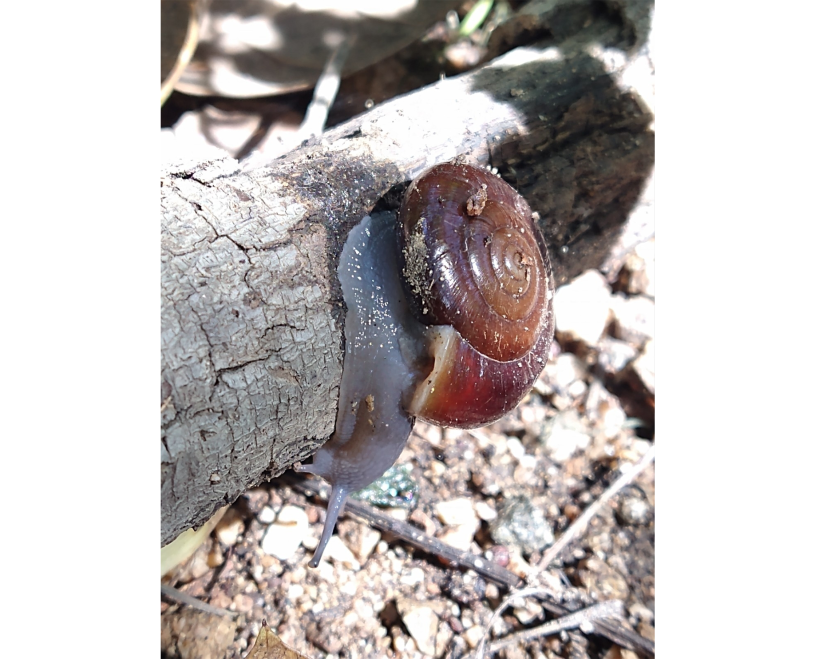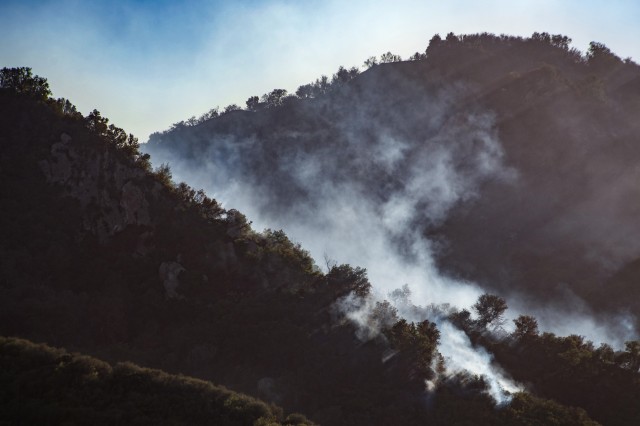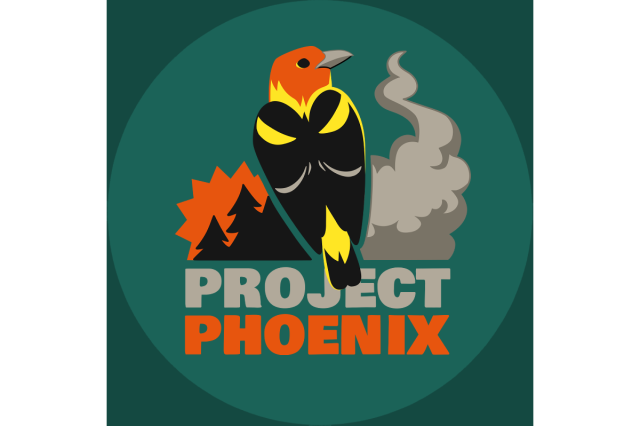BE ADVISED: The museum's parking lot will be closed to guests from Friday, November 1 to Friday, November 15 in preparation for the PST Art + Science Family Festival. Please plan your visit accordingly. For questions or directions, please call 213.763.3466 or email info@nhm.org.
Where There's Smoke
A look at what we know and don't know about how growing wildfires impact our natural world, and how we can learn to cope

Published August 25, 2023
Fire has shaped the natural history of Southern California for thousands of years, and the legacy of those cyclical burnings is recorded in museum collections. NHMLAC researchers use those collections—from fossilized pollen to the feathers of bird specimens and community science observations—to help us understand how fire shaped the region’s past, and how the terrible growth of these blazes threaten our future.
For the first story in our new series on wildfires, we checked in with museum experts to see how wildfires impact the organisms they study. They are examining this disastrous trend through the lens of natural history and other perspectives to understand how people can plan for—and benefit from—environmental restoration and recovery and what we humans need to do to collectively to bring our planet’s temperature down.
Greg Pauly, Curator of Herpetology
“Wildfires can combine with rain events to be especially damaging to stream-dwelling species. Once rains return, burned hillsides are susceptible to erosion, resulting in sediment run-off or worse—debris flows—that fill in deeper pools in seasonal creeks and rivers. These deeper pools are critical breeding habitat for California red-legged frogs, California newts, and western pond turtles, all species that are declining range-wide and now have one more major challenge threatening their survival."

iNaturalist observation by André Giraldi
Olivia Sanderfoot
Postdoctoral Fellow at the La Kretz Center for California Conservation Science
“Despite the fact that we know a lot about how wildfire smoke is impacting public health, we know very little about how wildfire smoke is impacting the health and behavior of animals, including birds. As an ecologist, I'm most worried about birds because birds are highly sensitive to air pollution and likely to experience adverse health impacts upon smoke inhalation.”

iNaturalist observation by stevestevesen
Jann Vendetti
Associate Curator of Malacology
“The San Gabriel chestnut snail lives in the fire-prone San Gabriel Mountains, and I've observed them in one of the regions that was burned before the Bobcat Fire. How do they survive wildfires? I imagine that they can isolate themselves in talus slopes or rock piles during fire, but understanding how these snails and others native to our fire-prone habitats cope needs further study.”

iNaturalist observation by Susan Hopkins
Austin Baker
Postdoctoral Researcher in Entomology
"Insects are impacted by wildfires like most organisms, however, they can show a variety of responses to fire, both positive and negative. Many groups of insects can often escape the immediate peril of wildfires by flying away or digging into the soil. They are among the first animals to re-colonize a site post-fire, and are an important group to study to understand ecosystem recovery after a fire."

iNaturalist observation by Nick Bédard
Sam Tayag
Community Science Program Manager
“Recovery from a wildfire is an adventure novel. It's not an action movie. It's little steps that oftentimes people don't see happening all coming together to this big moment, and once that recovery happens, it's super cool to kind of zoom out and take in the whole land. Then all of a sudden, after you're surveying for so long and looking at the little microhabitats and the individual species, one day you roll up, and it’s a completely different place. And it's beautiful.”

iNaturalist observation by Sam Tayag

